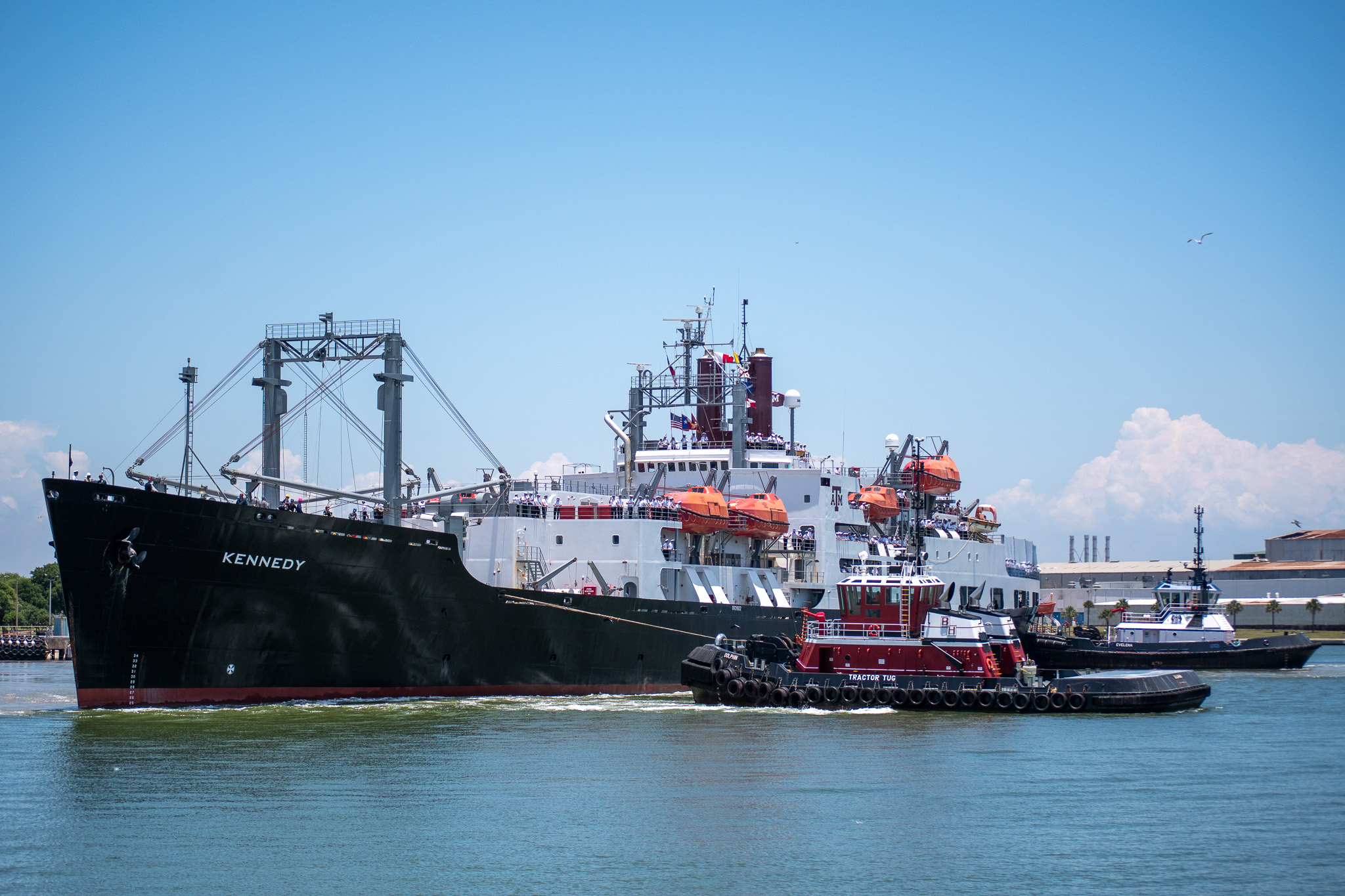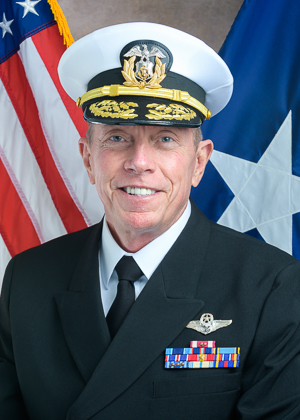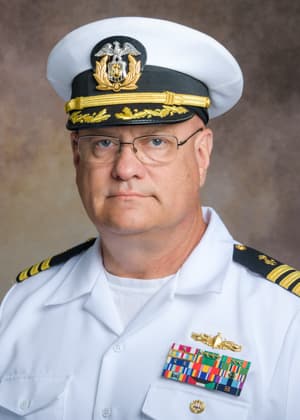About Us
Founded in 1962, The Texas A&M Maritime Academy is one of six maritime academies in the United States and the only academy located on the Gulf Coast. It provides an opportunity for cadets to learn how to operate and maintain an ocean-going vessel. In addition to classroom and field training during the regular school year, cadets sail aboard a state training ship during three summer sea terms to gain practical experience in seamanship, navigation, and engineering operations. At the conclusion of the program, license option cadets complete exams to become U.S. Coast Guard licensed deck or engineering officers in the Merchant Marine and may seek employment in the exciting field of marine transportation.

The current training ship, the KENNEDY, officially became the training ship of Texas A&M Maritime Academy in Spring 2023 from Massachusettes Maritime Academy although the KENNEDY has hosted summer sea terms in 2018, 2021, and 2022.
The TS KENNEDY was built in 1967 as the VELMA LYKES, for Lykes Bros. Steamship Company. KENNEDY is a C-5 Far East Clipper-class break bulk cargo ship carrying various products all over the world. The ship served with Lykes Bros commercially worldwide, including several trips in the Persian Gulf during the First Gulf War, and was later sent to the ready reserve fleet as “Cape Bon”. In 2003, the ship completed a refit and was moved to Massachusetts Maritime Academy as TS ENTERPRISE. Another major renovation was completed in 2009 and the ship was renamed KENNEDY. The KENNEDY is 540-ft in length, 76-ft wide and has a gross tonnage of 13,886. The KENNEDY is powered by two 600-psi Foster Wheeler Boilers and a De Laval steam turbine - propulsion that is extremely rare in today’s maritime world- driving a single propeller. Her top speed is approximately 20 knots at 95 rpm with her engine delivering 15,500 hp.
The first ship used by Sea Aggies was the TEXAS CLIPPER, a 473-foot, 14,000-ton ship that began as a World War II transport ship called the USS Queens and ferried wounded troops injured on the battlefield, including operations in the Pacific during the battle at Iwo Jima. When the war ended, the ship became one of the Four Aces (the SS Excambion), serving as a luxury cruise liner and making frequent round-trips from New York City to the Mediterranean.
“The original ship had a rounded stern, like the fabled Clipper ships, and so the ship bore the name of the TEXAS CLIPPER,” says Stephen Curley, Regents professor of English at Texas A&M-Galveston who has written a book about the ship titled The Ship That Would Not Die. “Hands down, the first TEXAS CLIPPER is the most significant of all the ships because it trained Aggie midshipmen on 30 annual summer voyages.”
The TEXAS CLIPPER was eventually used by hundreds of Sea Aggies from 1965 through 1994 and served as a floating classroom around the world for students studying maritime sciences, oceanography and marine biology.
The ship was replaced by the TEXAS CLIPPER II, which had formerly been the USNS Chauvenet and was designed by the Navy to conduct hydrographic surveys. In 2005, The TEXAS CLIPPER II was replaced by the former USNS Sirius, which was later replaced in 2009 by the SS Cape Gibson.
The GENERAL RUDDER came to Texas A&M Maritime Academy in 2012 and is named for legendary Texas A&M graduate James Earl Rudder, who commanded the fabled Army Rangers during their scaling of Pointe Du Hoc on D-Day, June 6, 1944, on the French coast. Rudder went on to become president of Texas A&M from 1959 until his death in 1970. Thanks to the hard work of General Rudder and other local leaders, in 1962 the Texas A&M Maritime Academy began operations.
The GENERAL RUDDER began her career in 1983 as the USNS Contender, an ocean surveillance ship for the U.S. Navy and was designed to collect underwater acoustical data in support of Cold War anti-submarine warfare.

Superintendent
RADM Michael E. Fossum

Deputy Superintendent
Capt. Allan F. Post

Assistant Superintendent of Cadets
Dr. Todd Sutherland '90
